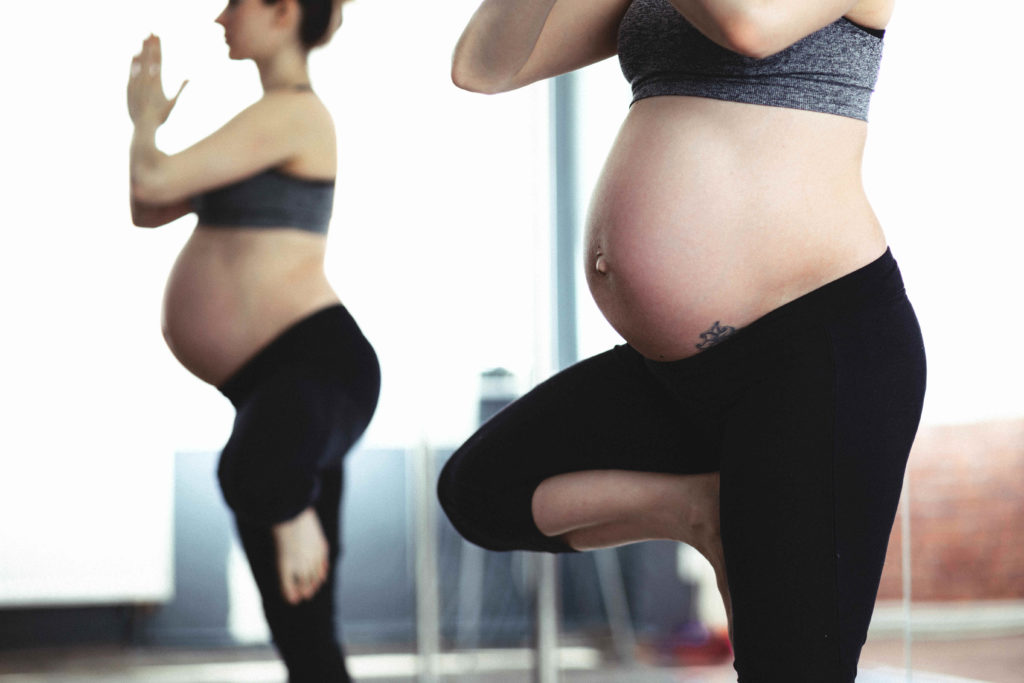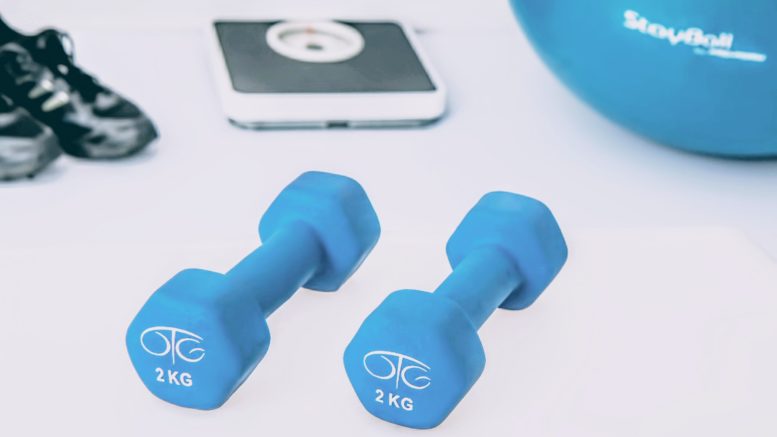Moderate exercise during pregnancy can give you the energy to improve your heart health and pump up self-image. Keeping a healthy body will reduce frequent problems such as lower back pain, fatigue and might also shorten labor time.
It is advisable before starting a workout routine to check with your doctor and ensure the activities you choose are safe. Remember your goal isn’t training for dancing competition but to maintain your pre-pregnancy wellness. During pregnancy try to exercise for at least 45 minutes of moderate workout 3-4 days a week. Women who were actively exercising before pregnancy and healthy while pregnant should continue working out as before with minor adjustments depending on the trimester.
In case you have medical setbacks such as diabetes, asthma or heart disease, you may avoid exercising. Have in mind that it may be harmful if you have pregnancy-related conditions such as the weak cervix, history of early labor or previous premature birth, recurrent miscarriage, low placenta, spotting or bleeding.
Yoga

Prenatal yoga encourages flexibility, deep breathing, relaxation, and focus. That’s all proper preparations for the birth marathon. Get a pregnant specific class or ask your instructor to modify the session to fit you. Avoid full inversions such as headstands and handstands as well as backbends because of potential blood pressure issues. Keep off hot yoga (Bikram) because you need to avoid exercises that overheat you.
As pregnancy progresses, skip some positions that are challenging your balance. During the second trimester steer clear positions that entail you lying flat on your back, since your uterus gets a bit heavier, putting much pressure on central veins and decrease blood flow to the heart. Be cautious not to overstretch, and pregnant moms produce relaxin hormone that enhances joint mobility and flexibility, making it essential for one to understand her limits and hold back a little when stretching.
Yoga strengthens the muscle system and stimulates blood circulation. These techniques you can utilize to have a little control and stay calm during labor.
Swimming

You feel weightless in water even if you are caring twins.
With swimming, there’s no chance of falling on your tummy and injuring the baby. Working out in water provides a better range of motion with minimal pressure on your joints. In the ninth month, you can dance, do aerobics, walk and swim in water. Dip swim may relieve puffy ankles, nausea, and sciatic pain. The fetus floats along with the mother, so it is gentle on her ligaments and loosening joints.
Choose a comfortable stroke that does not hurt the back muscles, neck or shoulder. The breaststroke is the most convenient one because one doesn’t need to rotate the belly or torso. Be careful when getting in the water. Jumping or diving might cause much abdominal impact. Stay away from hot tubs, saunas, steam rooms, and heated pools to avoid overheating.
Pilates
Pilates workout strengthens pelvic floor and tummy muscles, a body part known as the stable core. The Pilates instructor will guide on the body posture and holding the position. He or she will take you through a series of movements that will strengthen the core muscles. Progressively you will learn to breathe with exercise and how to take rests. Pilates mainly targets muscles that are vulnerable to weakening during pregnancy in a style that support and not straining.
Dancing
You can continue dancing if you did regularly before. Alternatively, get your heart pumping by gently dancing to the tune of your best hits at the privacy and comfort of your home. Avoid sudden changing of direction, twirling, jumping and leaping as you may lose balance.
Get the cardiovascular exercise from fast-paced dance or maintain and stretch muscle tone while holding positions in the ballet. The safe dancing during pregnancy is keeping in mind that your body might react differently every time you exercise. What works for you today may not feel comfortable tomorrow, so frequently adjust your routine with your body demands.
Weight training
Lightweight helps thwart the risk of injury while pregnant by strengthening and hardening the muscles around the joints and prepares the body for the heavy lifting you will do once the baby comes. It is an excellent bet to boost the muscles tone when expecting; opt for more reps using a lower load. You can use the machines to limit the range of motion and minimize the chances of injury. Skip the isometric movements-workouts that you hold still particular positions, and if you forget to breathe, you can be lightheaded.
Lifting too heavy weights can strain the muscles and exert severe pressure to the abdomen. Stretch when you are done!
Walking

There’s no safer and more comfortable exercise than walking. It is a workout you can engage right up until delivery date. Plus you don’t need a gym or special equipment to do the walking. You will get a cardiovascular exercise without much impact on the ankles and knees.
As the tummy gets bigger, you might lose a sense of balance and coordination on your body, so try to take the walks on level surfaces and keep an eye on potholes and other obstacles for your stability. Put on supportive sneakers. In the third trimester, the feet might swell so consider getting comfortable shoes.
Indoor Cycling
Spinning can be a good workout, as it allows you to pedal at your pleasure without the chance of falling or exerting too much pressure on the knee joint and ankles. Sit out the sprints if you exhausted or over-heated at any point. Stay seated while hill climbing since it is thorough for expecting mothers. Adjust handlebars to be more upright and not leaning forward to reduce pressure on your lower back. When spinning becomes exhaustive take a break.
Low-Impact Aerobics
These exercises strengthen the lungs and heart and help in maintaining muscle tone. In low impact workout, one leg should always be on the ground. The workout helps in minimizing the risk of weakening pelvic base muscles, maintaining balance and reducing stress on the joints. A weak pelvic causes urine leakage.
Exercise during pregnancy should aim to:
- Improve circulation and increase heart rate steadily
- Prepare muscles for labor and birth
- Control and support healthy weight gain
- Keep the body strong and flexible
Importance of exercise during pregnancy
- Reduce the likelihood of preterm labor and birth
- Decrease the risk of hypertension and gestational diabetes
- Hasten up recovery after delivery
- Reduce the need for pain relief
- Boost the chances of a natural birth
- Shorten the labor proces
Also, research suggests that if a mother to be exercise during pregnancy, fetal heart rate is lower, fat mass is lower, birth weight is healthier, there is advanced neurobehavioral maturation, and stress tolerance improves.





